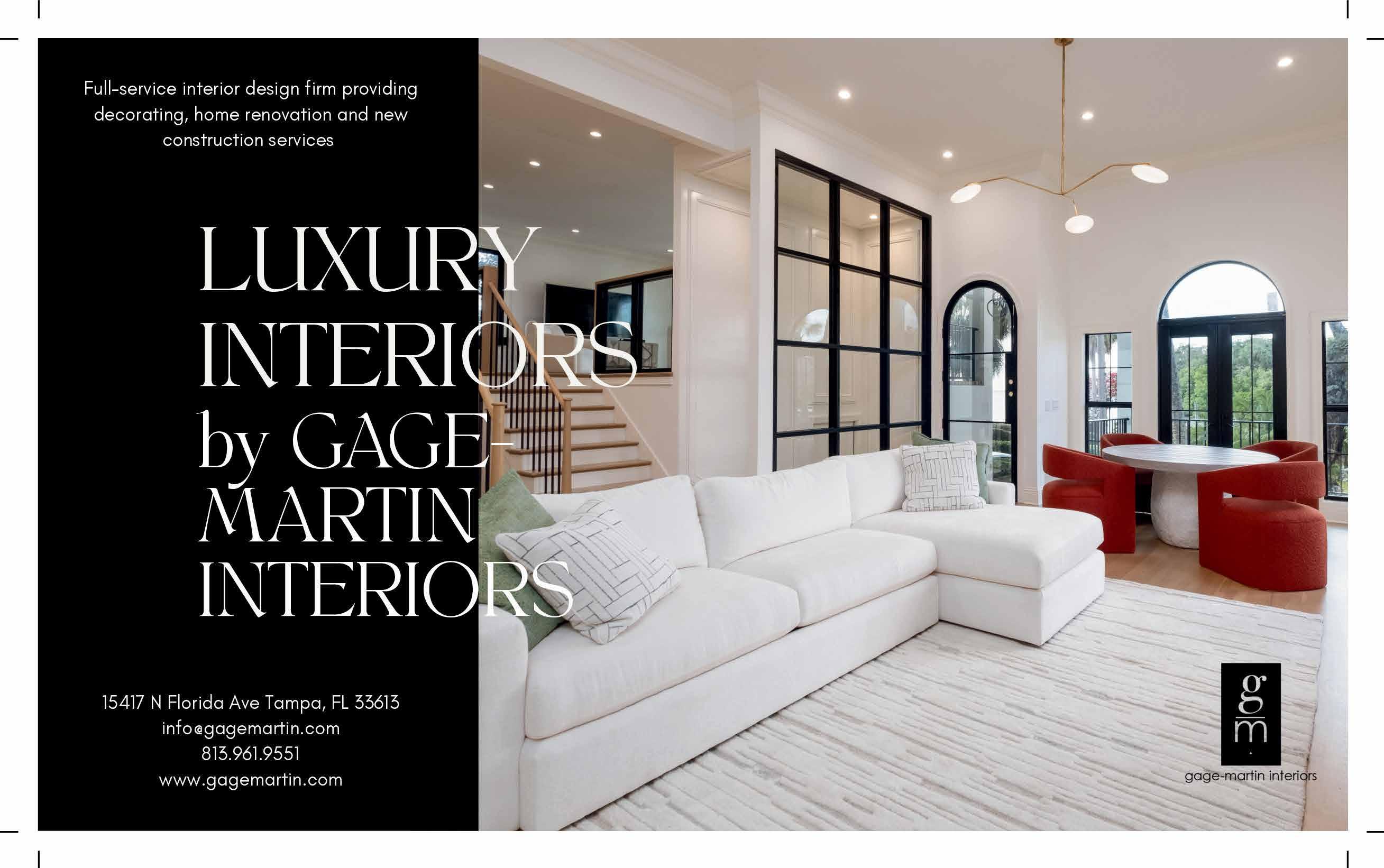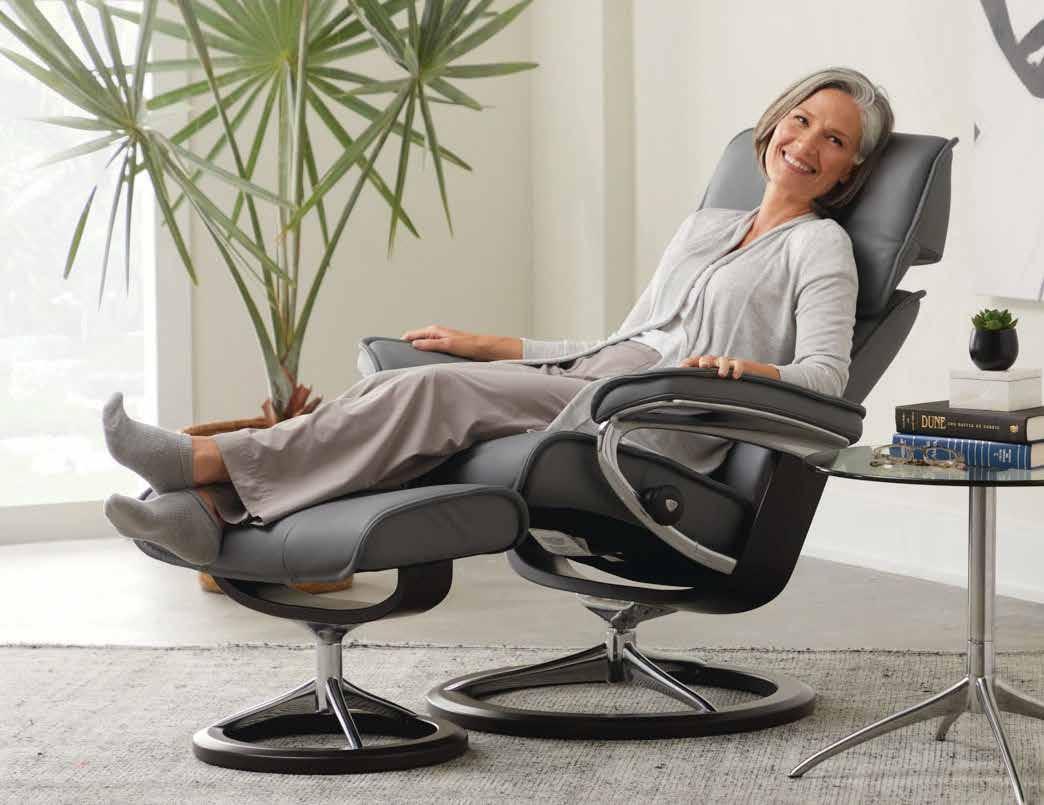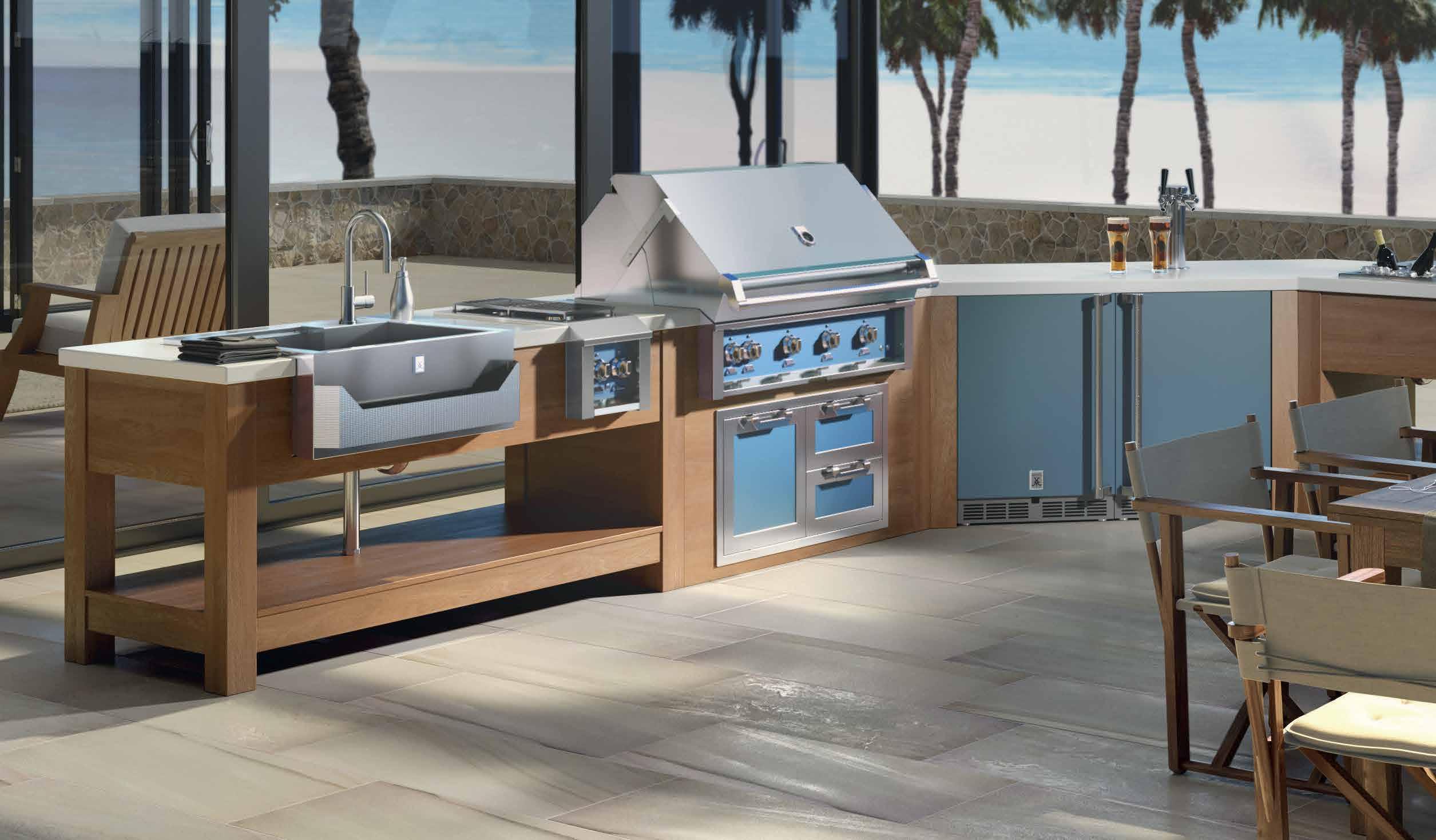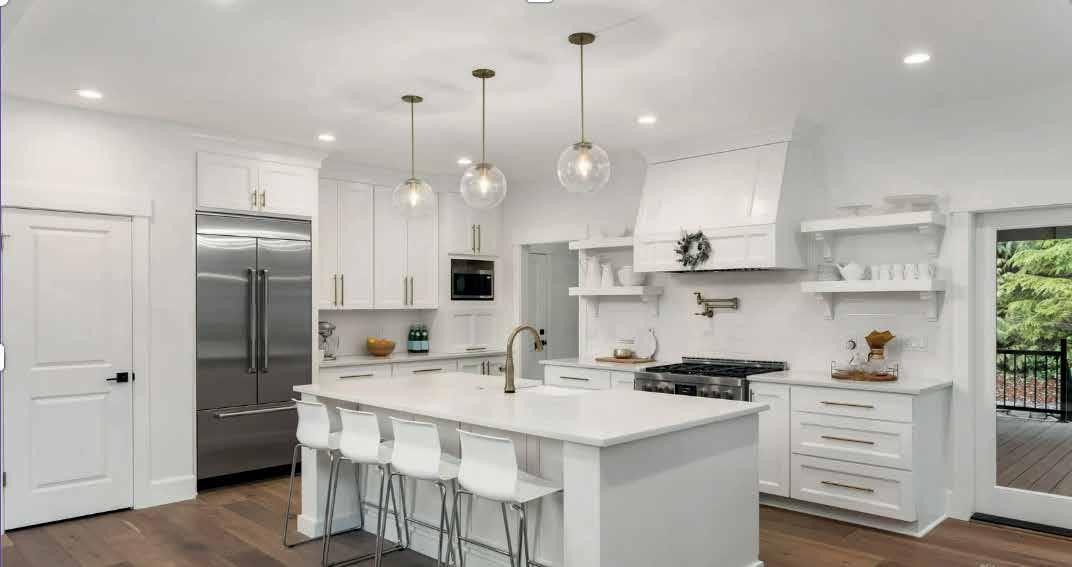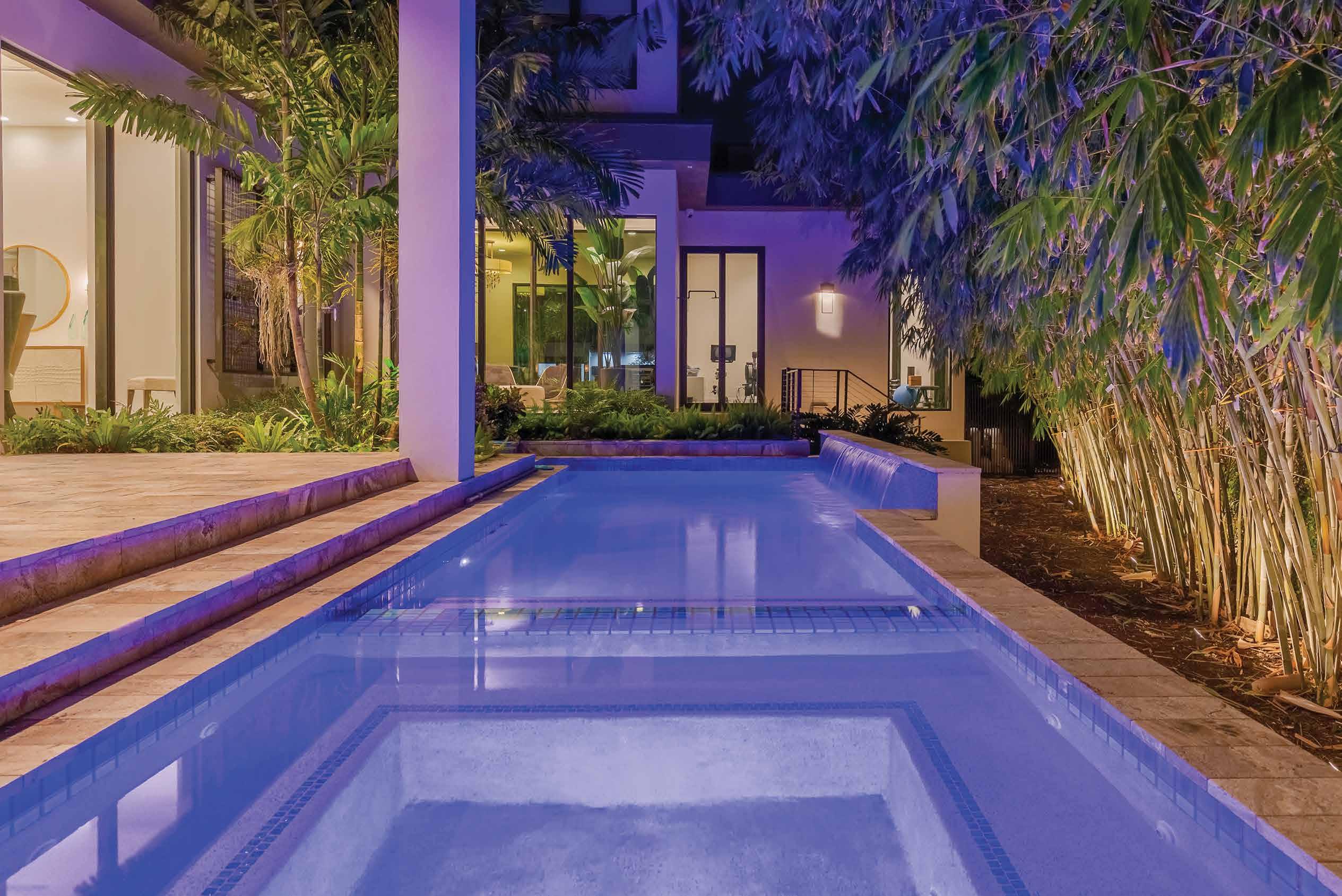
5 minute read
WELLNESS INTERIORS
ACROSS ST. PETERSBURG AND BEYOND, PEOPLE ARE LEANING INTO WELLNESS INTERIOR DESIGN, WHICH IS A HOLISTIC APPROACH TO CREATING SPACES THAT SUPPORT PHYSICAL, EMOTIONAL AND MENTAL WELL-BEING.
By Anne Zimmerman Briand
In today’s fast-paced world, the pull toward tranquility and escape has never been stronger. With so much to juggle—work, family and everyday stress—homeowners are craving environments that restore rather than exhaust them.
"Most of my clients are so busy they want their homes to feel like a spa,” says interior designer Isabel Lomba of Graham & Co. Interiors. “I don’t know about you, but I love how rejuvenated I feel after visiting a great spa. I transform my clients’ homes into their own special retreats by creating spaces that enhance their overall well-being and quality of life. I believe your home should be your sanctuary, so I’m intentionally bringing wellness-focused design to my clients by creating beautiful, sophisticated and comforting spaces that bring joy, serenity and balance into their lives.”
Lomba’s viewpoint is at the heart of a growing movement in home design—one that looks beyond beauty to create spaces that support how we feel, heal and live.
Interior designers use natural light, organic textures, calming color palettes and clutter-free configurations to tap into wellness interiors. But this is more than just an aesthetic trend; this is a movement rooted in science.
A 2022 study published in the International Journal of Environmental Research and Public Health found that thoughtfully designed living spaces can help prevent and manage chronic diseases. The researchers advocate for “restorative living spaces” that support self-care, emotional resilience and reduced stress—goals that designers are achieving through natural materials, eco-friendly choices and personalized functionality.
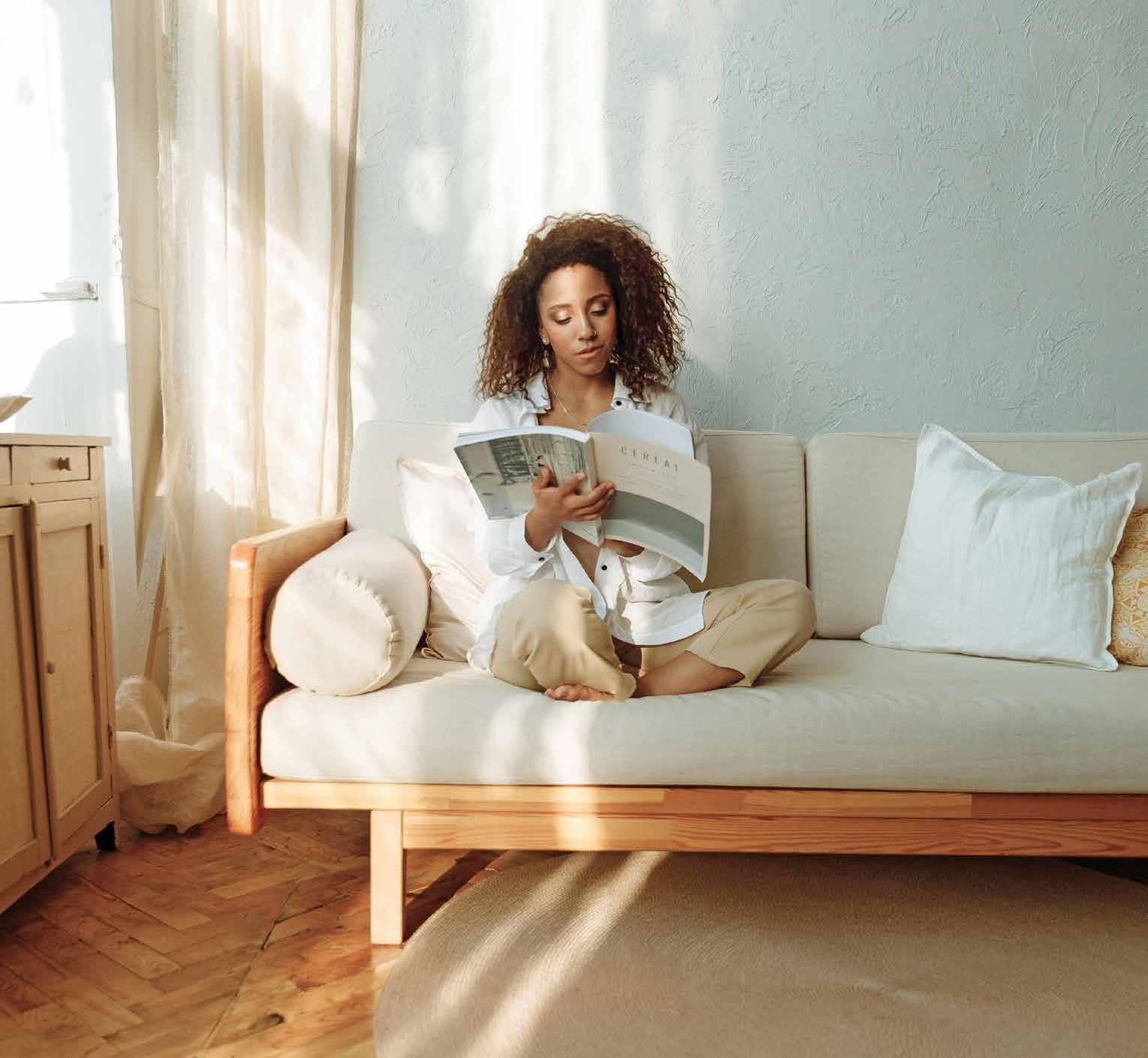
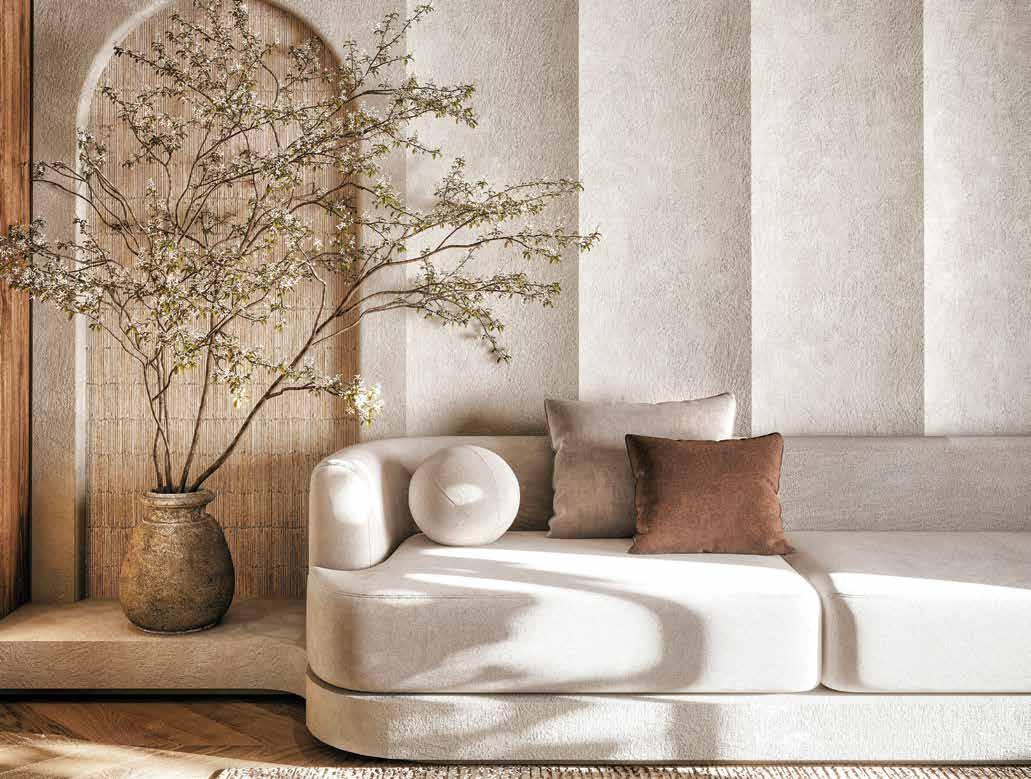
Technology is also playing a growing role in wellness design, especially in Florida, where managing light and heat is key. Designers are now using tools that help the home adapt to its environment, supporting comfort, rest and safety.
“Smart home technology can enhance wellness by syncing with the body’s natural rhythms,” says Melanie Niemerg of Integral Home Technology. “Lighting that mimics the sun’s natural arc, such as circadian lighting, can boost mood, regulate sleep and improve focus. Homeowners can even pair lighting with automated shades on timers so their space adapts throughout the day. We often work with clients who live on the water and want to enjoy the view while also protecting their furnishings. We’ll set the shades to lower at just the right time to reduce sun bleaching, creating a home that’s both functional and restorative.”
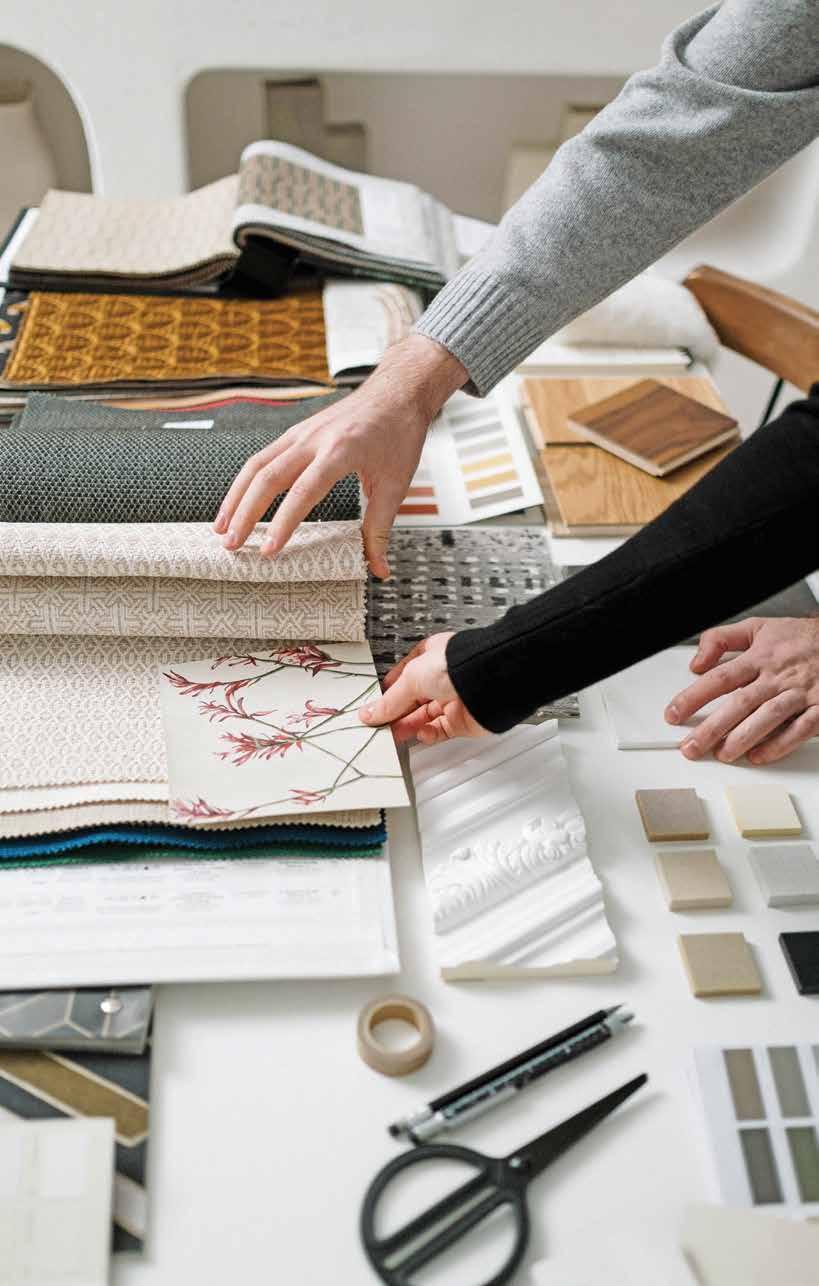
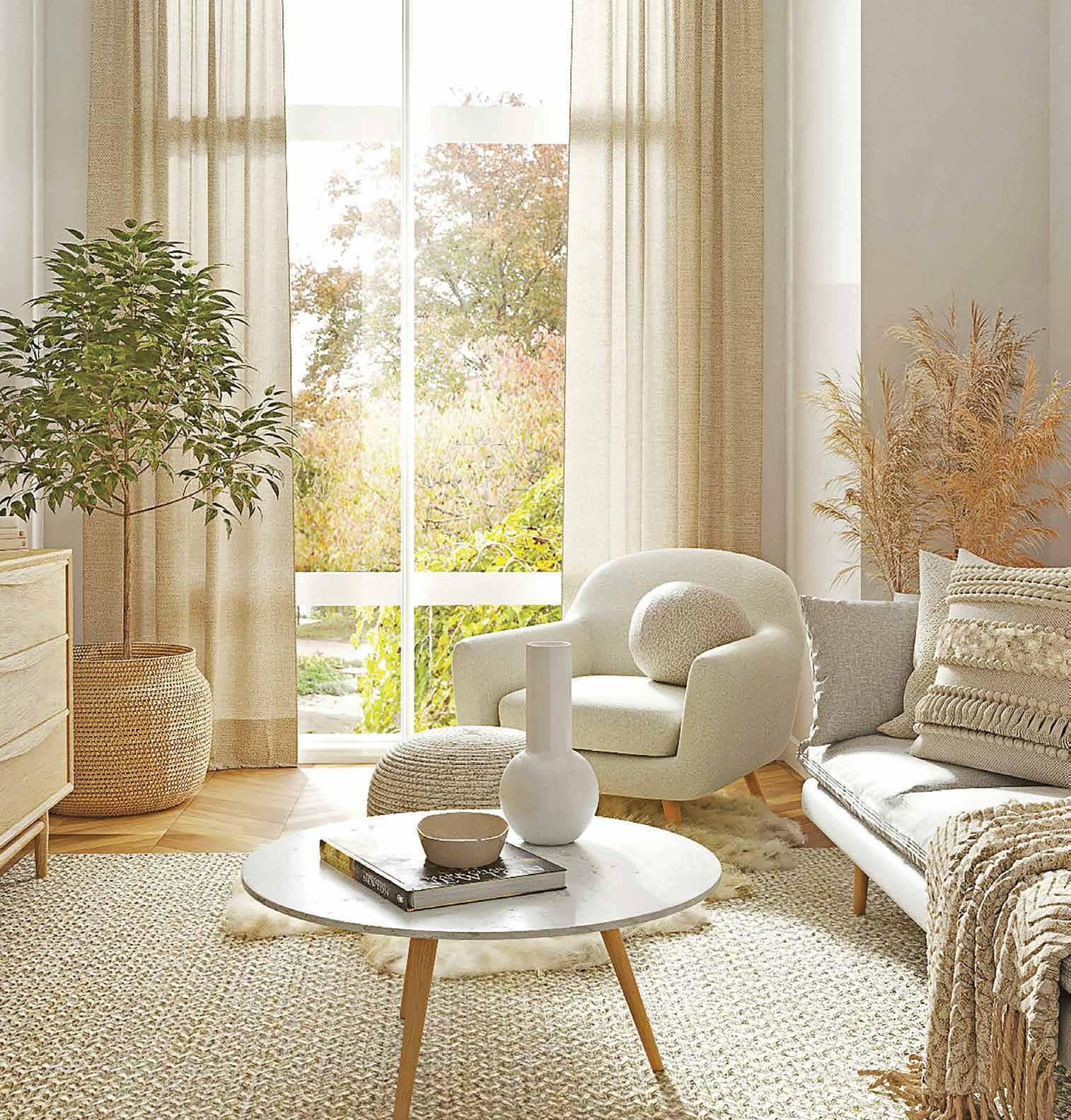
As smart solutions become more intuitive and discreet, they are fusing into wellness-focused interior choices, amplifying the emotional and physical benefits of good design.
At its core, designing for well-being is about creating interiors that align with your body’s natural rhythms and support emotional balance. Here are a few foundational elements:

• Natural light: Large windows and skylights help regulate circadian rhythms, boost vitamin D and support mental clarity.
• Non-toxic materials: From low-VOC (volatile organic compounds) paints to untreated wood and organic textiles, using safer materials improves indoor air quality.
• Clutter-free layouts: Smart storage and minimalist styling create a sense of ease and order.
• Defined zones: Carving out spaces for movement, rest or creativity can bring structure and harmony to everyday routines.
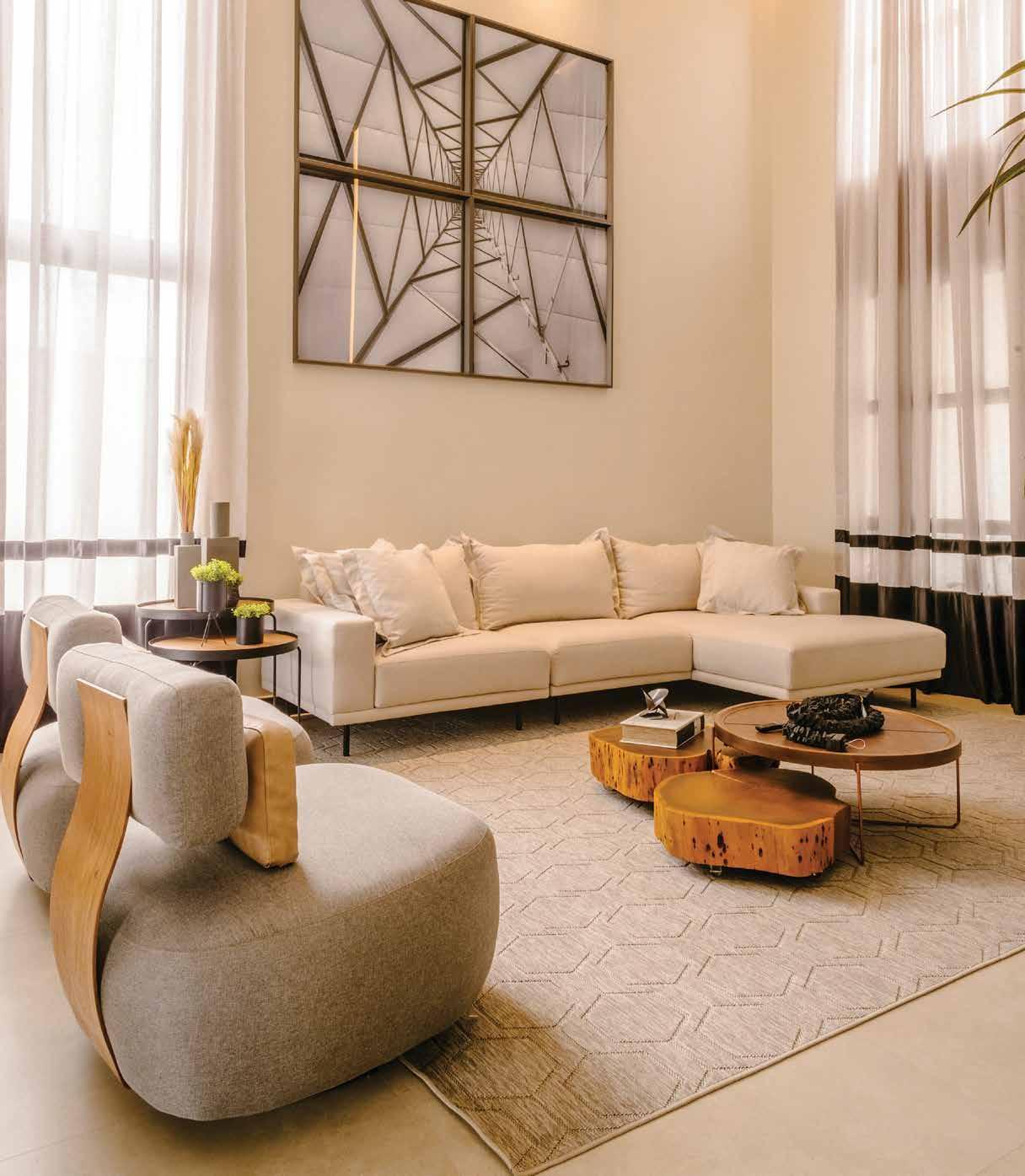
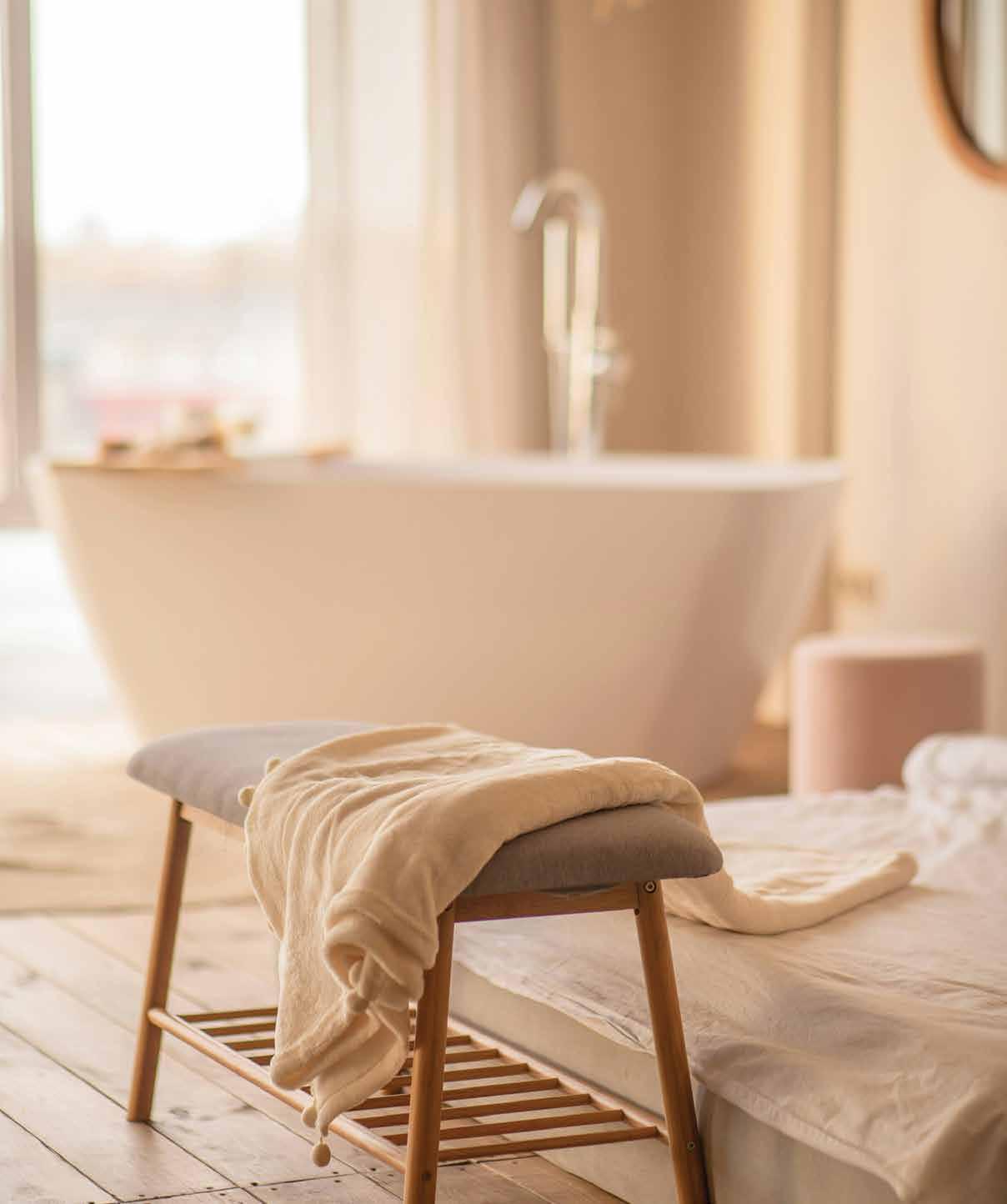
As the concept of “home as sanctuary” continues to evolve, more homeowners are designating specific rooms or corners of their homes for self-care. Popular ideas include creating yoga, Zen and meditation rooms with soft lighting and natural fibers to promote relaxation and mindfulness. Spa bathrooms have also become a favorite, featuring soaking tubs, diffused lighting and earth tones to create a soothing, tranquil atmosphere. Additionally, reading nooks are being incorporated into homes, offering a cozy retreat with layered textures, warm lighting and personal touches for a comfortable space to unwind and enjoy a good book.
What’s good for the earth is good for your health, too. Sustainable design choices, such as bamboo flooring, reclaimed wood, energy-efficient fixtures and water-saving systems, not only reduce your environmental footprint but also create cleaner and more harmonious living spaces.
Wellness design also considers what goes into a home, from building materials to cleaning products and even pest control. Choosing non-toxic, eco-friendly solutions over conventional pesticides is one more way to reduce indoor chemical exposure and promote a truly healthy living environment.
Today’s wellness interior design movement marks a return to what we’re all craving: calm, comfort and connection. By weaving together natural elements, sustainable practices and thoughtful functionality, today’s designers are creating homes that don’t just look good—they feel good.
